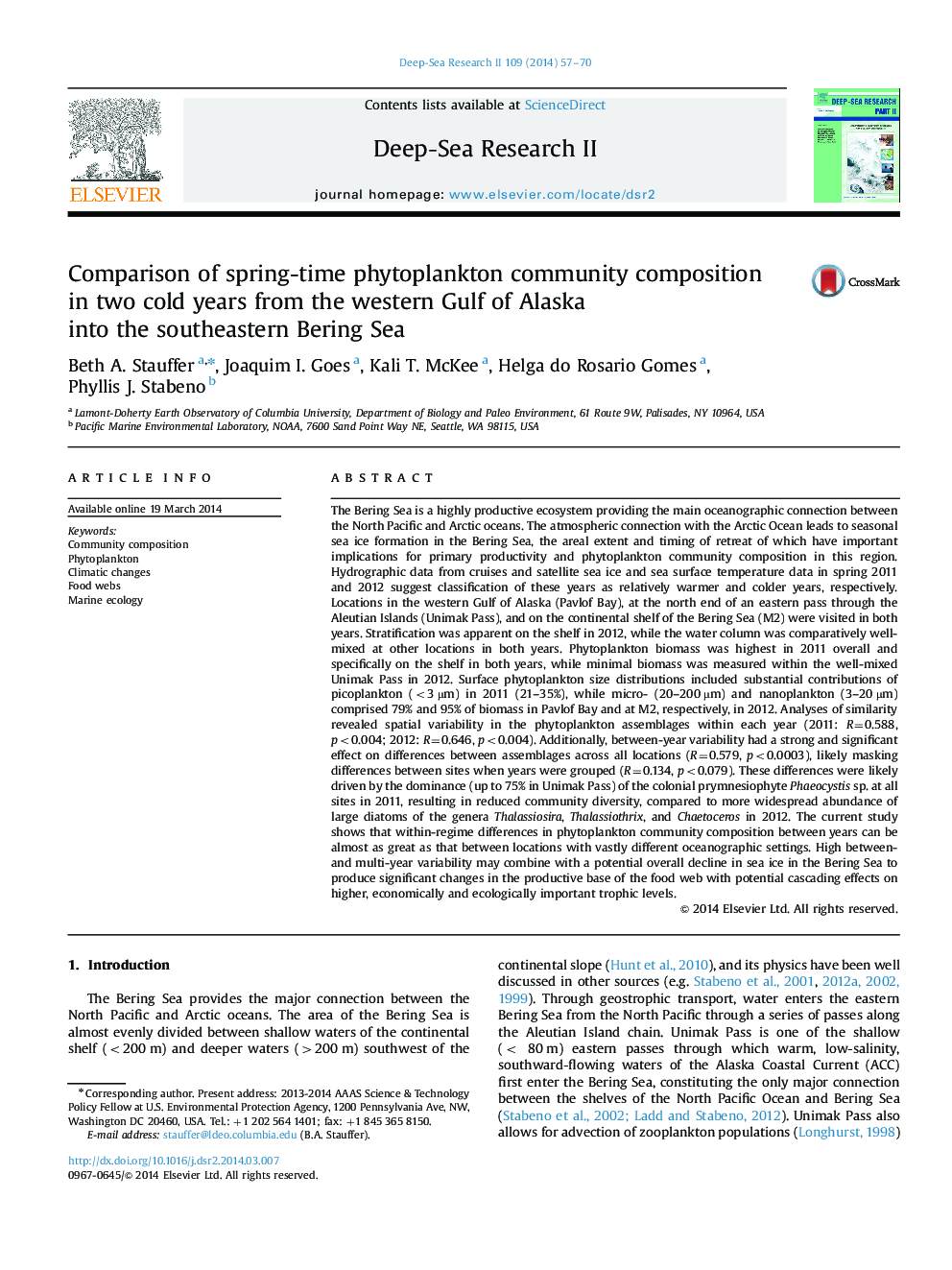| کد مقاله | کد نشریه | سال انتشار | مقاله انگلیسی | نسخه تمام متن |
|---|---|---|---|---|
| 6384161 | 1626431 | 2014 | 14 صفحه PDF | دانلود رایگان |
The Bering Sea is a highly productive ecosystem providing the main oceanographic connection between the North Pacific and Arctic oceans. The atmospheric connection with the Arctic Ocean leads to seasonal sea ice formation in the Bering Sea, the areal extent and timing of retreat of which have important implications for primary productivity and phytoplankton community composition in this region. Hydrographic data from cruises and satellite sea ice and sea surface temperature data in spring 2011 and 2012 suggest classification of these years as relatively warmer and colder years, respectively. Locations in the western Gulf of Alaska (Pavlof Bay), at the north end of an eastern pass through the Aleutian Islands (Unimak Pass), and on the continental shelf of the Bering Sea (M2) were visited in both years. Stratification was apparent on the shelf in 2012, while the water column was comparatively well-mixed at other locations in both years. Phytoplankton biomass was highest in 2011 overall and specifically on the shelf in both years, while minimal biomass was measured within the well-mixed Unimak Pass in 2012. Surface phytoplankton size distributions included substantial contributions of picoplankton (<3 µm) in 2011 (21-35%), while micro- (20-200 µm) and nanoplankton (3-20 µm) comprised 79% and 95% of biomass in Pavlof Bay and at M2, respectively, in 2012. Analyses of similarity revealed spatial variability in the phytoplankton assemblages within each year (2011: R=0.588, p<0.004; 2012: R=0.646, p<0.004). Additionally, between-year variability had a strong and significant effect on differences between assemblages across all locations (R=0.579, p<0.0003), likely masking differences between sites when years were grouped (R=0.134, p<0.079). These differences were likely driven by the dominance (up to 75% in Unimak Pass) of the colonial prymnesiophyte Phaeocystis sp. at all sites in 2011, resulting in reduced community diversity, compared to more widespread abundance of large diatoms of the genera Thalassiosira, Thalassiothrix, and Chaetoceros in 2012. The current study shows that within-regime differences in phytoplankton community composition between years can be almost as great as that between locations with vastly different oceanographic settings. High between- and multi-year variability may combine with a potential overall decline in sea ice in the Bering Sea to produce significant changes in the productive base of the food web with potential cascading effects on higher, economically and ecologically important trophic levels.
Journal: Deep Sea Research Part II: Topical Studies in Oceanography - Volume 109, November 2014, Pages 57-70
